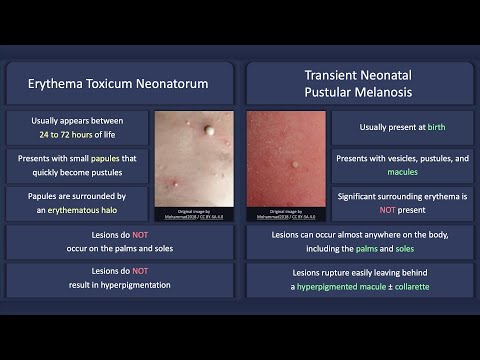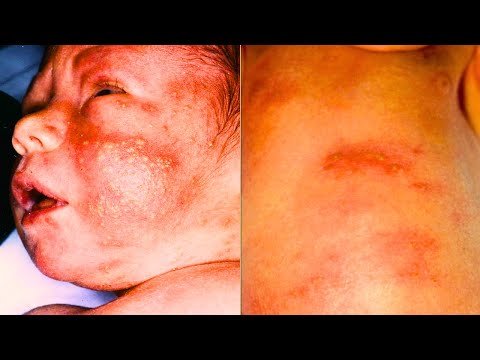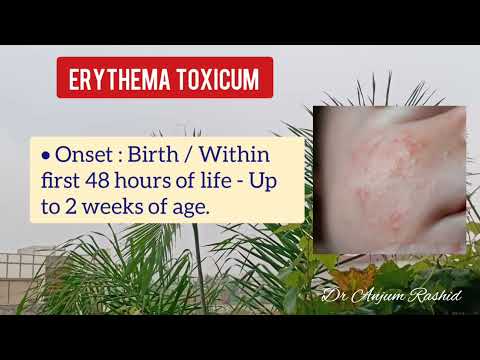Understanding conditions affecting newborns can feel overwhelming, especially for new parents. Erythema toxicum neonatorum (ETN) stands out as a common yet benign skin condition that pops up in many newborns shortly after birth. We’re diving deep into this neonatal enigma to help you grasp everything about it—from what it is, to its symptoms and management.

What is Erythema Toxicum Neonatorum?
Erythema toxicum neonatorum is a condition that affects roughly 50-70% of newborns. It’s typically spotted within the first week of life, appearing as a rash featuring red spots surrounded by an irritated flare. While it might seem alarming, especially for first-time parents, it’s essential to remember that ETN is generally harmless and resolves on its own within a couple of weeks.
This condition should not be confused with other forms of erythema like erythema chronicum migrans—which can be linked to Lyme disease—or erythema multiforme, which often stems from infections or medication reactions. Recognizing these distinctions is critical to ensuring that your little one gets the right treatment if needed.
Having a solid understanding helps calm the nerves in those early parenting days. So don’t fret too much if your baby starts showing signs of ETN—it’s just one of those quirky things that can happen in infancy!

Key Symptoms of Erythema Toxicum Neonatorum
Spotting the symptoms of erythema toxicum neonatorum can ease your worries. Here’s a rundown of the telltale signs:
When you understand these symptoms, you’ll feel like a superhero ready to tackle any concern that comes your way!

Erythema Toxicum Neonatorum vs. Other Erythema Conditions
Let’s break it down! Differentiating erythema toxicum neonatorum from other skin conditions is key.
Being able to identify the differences means you’re one step closer to taking charge of your baby’s health.

Insights into Erythema Toxicum Neonatorum
While erythema toxicum neonatorum is generally straightforward, exploring its origins is fascinating.

Management and Care Strategies for Erythema Toxicum Neonatorum
Taking care of a newborn with erythema toxicum neonatorum involves some thoughtful strategies. Here are a few:
Providing proper care can make a world of difference for both you and your newborn.
The Impact of Erythema Toxicum Neonatorum on Newborn Health
Erythema toxicum neonatorum shouldn’t be viewed as a health crisis, but rather as a marker of an infant’s immune development. Celebrating the condition as a normal part of newborn life can help foster a supportive environment for both parents and caregivers.
Keeping the conversation going about ETN empowers parents, giving them peace of mind. Ongoing interest in skin health among newborns will deepen understanding of how environmental and immune factors interplay in a newborn’s first weeks of life.
In summary, while erythema toxicum neonatorum is a gentle reminder of the adjustment process for a newborn, it also opens the door for discussions around infant skincare, health insights, and parental support. Let’s embrace these early days and appreciate each little quirk that comes with them!
Remember, take care of your newborn, and they’ll be on their way to becoming the future champs of this world! And hey, always keep that knowledge coming—stay informed and ready to tackle life like a true Arnold Schwarzenegger in the gym!
For further exploration of health topics, check out relevant pieces like diabetic coma and toddler age range. Dive into skin health trends associated with atorvastatin calcium here, and let’s keep those healthy discussions rolling!
Erythema Toxicum Neonatorum: Symptoms and Insights
Fun Facts and Trivia
Erythema toxicum neonatorum might sound daunting, but it’s actually a common condition among newborns. Observed in around 50% of babies in the first week of life, this rashes usually pops up unexpectedly. Parents often mistake it for a more severe condition, but don’t let the name scare you—it’s typically harmless and often fades away within days. Just like the flurry of emotions in Misery Business lyrics, the initial shock can quickly turn into relief as the rash disappears just as swiftly!
Interestingly, researchers have noted that erythema toxicum neonatorum’s precise cause remains a mystery. It may be a normal response of the newborn’s immune system adapting to the outside world. This phenomenon could be seen as a cute little rite of passage, sort of like our pal Scott Phillips once mentioned about the challenges babies face. Speaking of mysteries, just as the complexities of Paraneoplastic syndrome are still being uncovered, the exact triggers for this rash are yet to be fully understood.
Parents often find themselves with a wealth of advice as they navigate baby care; it’s like taking a fun trip to the palestra of pediatric health! This helpful gathering of insights can sometimes feel overwhelming, but the good news is that erythema toxicum neonatorum is not contagious. That means you can focus on bonding with your little one without worrying about spreading it to others. For some, just accepting it can be a relief, much like the calming assurance found in the quaint little town of Scrabster, where peace reigns over daily hustle and bustle.
In conclusion, erythema toxicum neonatorum may look alarming, but it’s generally a fleeting phase that many infants experience. As parents, understanding this condition can transform that initial panic into calm, informed care—bringing a sense of joy rather than worry! Just remember, this little rash is far less formidable than it sounds, and sometimes, it’s the tiniest things that make the biggest impact, much like balancing your home budget with the help of The mortgage calculator.



























